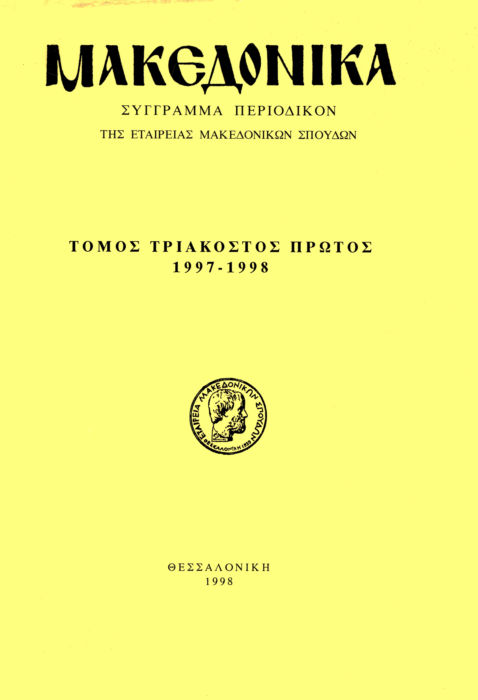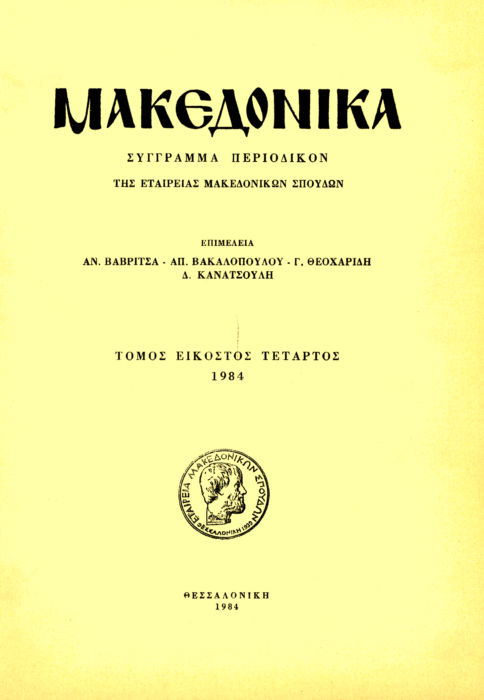Oppidum Celetrum: the lakeside settlement of Dispilio in Kastoria
Abstract
The only reference to Celetrum is found in Livy (XXXI, 13-XL), in his account of the march of the Roman consul Sulpicius, who, via Eordaea and Elimia, invaded the land of the Orestae and headed for Celetrum, evidently following the road across the Argestaeus Campus.
Oppiddum Celetrum was undoubtedly on the lake of Kastoria, according to Livy’s testimony and description. All the scholars, travellers, archaeolo gists, and researchers who have dealt with the subject (including Pouqueville, Desdevizes-du-Dézert, Dimitsas, Hammond, and Papazoglou) unhesitatingly locate Celetrum at Kastoria.
Various opinions have been ventured with regard to the name. Some assert that it comes from kello. According to Hesychius, a keletron is an implement with which τούς Ιχθύας θυρώσιν έν τοίς ποταμοΐς.
There is a particularly interesting old fishing method whereby the fish are forced into enclosed spaces on the bottom of the lake near the shore, from which they cannot escape. The method is known as katikia today. In antiquity, it was probably known as keletra, and very closely resembled the defensive arrangement of the stakes around the lakeside settlement, which, because of its close resemblance to the fish trap, the keletra, was named Keletron or Celetrum.
The study then seeks to determine where the Paeonians came from and where they settled and also to locate their capital, Amydon.
The whole layout of the Neolithic lakeside settlement identified as Roman Celetrum was fortified as early as the 5th century B.C., probably in the reign of Archelaus of Macedon (414/13-399 B.C.).
Remnants of the wall have been excavated relatively recently near the Church of the Analipsi. At the beginning of the 20th century, the wall survived to a greater height at the E end of the precinct.
Article Details
- How to Cite
-
Μουτσόπουλος Ν. Κ. (1998). Oppidum Celetrum: the lakeside settlement of Dispilio in Kastoria. Makedonika, 31(1), 1–30. https://doi.org/10.12681/makedonika.113
- Issue
- Vol. 31
- Section
- Articles

This work is licensed under a Creative Commons Attribution-NonCommercial-ShareAlike 4.0 International License.
Authors who publish with this journal agree to the following terms:
- Authors retain copyright and grant the journal right of first publication with the work simultaneously licensed under a Creative Commons Attribution Non-Commercial License that allows others to share the work with an acknowledgement of the work's authorship and initial publication in this journal.
- Authors are able to enter into separate, additional contractual arrangements for the non-exclusive distribution of the journal's published version of the work (e.g. post it to an institutional repository or publish it in a book), with an acknowledgement of its initial publication in this journal.
- Authors are permitted and encouraged to post their work online (preferably in institutional repositories or on their website) prior to and during the submission process, as it can lead to productive exchanges, as well as earlier and greater citation of published work (See The Effect of Open Access).





